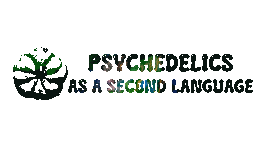Our daily stimuli explained!
Stimulants are the most used drugs in the world.
This statement may sound rather bold to many, considering how the media portrays the use of compounds such as cannabis and alcohol and our perception of stimulants. Often, when mentioning stimulants, people’s minds sail toward substances like amphetamines, cocaine, or methamphetamine. Hence, you may wonder, how are these the most used compounds? It’s not like people are constantly snorting cocaine before work or even taking out their glassware paraphernalia to smoke meth during their breaks.
But what if we think about substances in a realistic scenario, filled with less drama?
Rethinking about our routines, we tend to wake up and brush our teeth in the morning, followed by breakfast and coffee. (Or simply a coffee and a cigarette if you are European, or a breakfast tea if you are English.) Or thinking about our last night out or a week filled with work where you needed an extra boost and decided to have an energetic drink.
And here lies our queue for the topic of Stimulants.
Whether we agree or disagree to compare compounds such as amphetamines, methamphetamines, and cocaine to nicotine, caffeine, theine, and even theobromine present in various coffee beans, tea strains, and chocolate doesn’t make these compounds less stimulants, and certainly does not tick them off the stimulant definition stated by several chemical and pharmacological classes.
Thinking about this made me wonder what might be the most consumed stimulating beverage and what might have started the popularity of stimulating drinks worldwide.
To do so, we must dive into one of the longest histories of addiction, 2737 BC, according to a Chinese legend.
The legend states that the Chinese emperor Shen Nung was sitting beneath a tree while his servants boiled drinking water when some leaves from the tree blew into the water. Shen Nung was a renowned herbalist, so he decided to drink the infused accidentally made by his servants. This tree was Camelia Sinensis, the same tree we use to infuse various teas today. Hence, tea was born and became a thing.
It’s impossible to know if there’s any truth to this story, but we know that drinking tea became popular in China. Additionally, archeologists found tea in tombs dating back to 206 BC – 220 AD, and it became the national drink of China during 618-906 AD. By the late eighth century, tea was so beloved in China that a book called Ch’a Ching, or Tea Classic, was written as a tribute to the drink.
If the legend is true, and we compare the tomb findings to those of ancient civilizations, we can say that Ancient China venerated tea. Considering civilizations like the Egyptians, people in higher hierarchies were buried alongside sacred items, plants, and symbols of their wealth. Perhaps they were even aware of the stimulant effects of tea, but also its vast pharmacological value.
When thinking about tea, we have several varieties in mind. But the most common types of tea, such as black tea, green tea, white tea, and even variants such as Earl Gray and Matcha, among many others, all come from the same plant species, Camelia Sinensis, with different methods of growing, harvest, and techniques such as withering, rolling and oxidizing.
Read more about how to make your own tea here!
These techniques change the type of tea you make and alter some of its properties due to different fermentation processes.
For example:
- Black tea tends to have a slightly higher caffeine content than green tea.
- The average caffeine in black tea is ~40–70 mg per cup, while green tea has ~20–45 mg per cup.
- Black tea typically has a higher concentration of theophylline due to longer fermentation. Theophylline acts as a mild stimulant, which affects heart rate and breathing and can be used therapeutically for respiratory issues such as asthma and allergies.
- Green tea has the same or slightly lower concentrations of theobromine than black tea. Theobromine is also found in chocolate, and it’s known for its milder stimulant effects when compared to caffeine.
- L-Theanine although it’s not an alkaloid, both black and green tea contain L-Theanine. However, green tea tends to have a higher concentration, contributing to a more calming, less jittery stimulant effect.
Alongside the main phytochemicals present in Camelia Sinensis and its various forms mentioned above, we can also count on other phytochemicals such as flavonoids (Thearubigins (TRs) and theaflavins (TFs) and catechins), amino acids (L.theanine), vitamins (A, C, K), phenolic acids (caffeic acid (CA), gallic acid (GA), chlorogenic acids (CGA) and cauramic acid), lipids, proteins, volatile compounds carbohydrates, β-carotene, and fluoride that illustrated many promising pharmacological effects regarded as a growth promoter, cardioprotector, potent cholesterol-lowering effect, antioxidant and antimicrobial, etc.
Such properties and legends eventually made tea sacred on its own, and even today, we can experience and witness tea ceremonies in Asian countries, making tea the second most consumed stimulant beverage worldwide, with 7.09 billion Kilograms consumed only in 2023.
But that’s right, the second most used, another beverage would stop by to interrupt our tea party around 800 AD.


